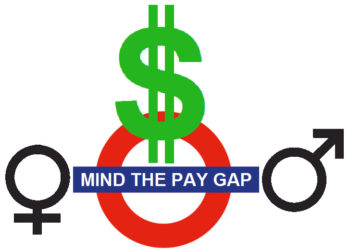Whether as writers, editors, publishers, or disseminators of science and scholarship, everyone working in scholarly communications can play a role in shining a light on the research we are responsible for. To celebrate International Women’s Day, Elsevier is doing just that in their analysis of 20 years of global research from a gender perspective, published today.
“Gender in the Global Research Landscape” uses data from Elsevier’s Scopus database of over 62 million documents to identify trends in global research from a gender perspective over 20 years, 12 countries and regions, and 27 subject areas. The three main topics covered in the report are: The global research landscape through a gender lens; Gender and research leadership, collaboration, interdisciplinarity, and mobility; and The gender research landscape. Elsevier used tools that provide information on first names and gender by country, such as Genderize.io, NamSor sociolinguistic analysis, and Wikipedia name lists to assign a gender to author profiles with a first name. This information wasn’t available for all authors and, together with the geographical focus on just 12 countries/regions (China, for example, is notable for its absence), this somewhat limits the value of the study. However, it contains much of interest and the findings are still likely to be directionally accurate.
First, the good news.
The proportion of women among researchers and inventors has increased over time in all 12 comparator countries and regions. Brazil and Portugal, where 49% of researchers are now women, lead the field, and women represent 40%+ of researchers in all but three countries studied. Given that in 1996-2000 only Portugal had more than 40% women researchers, this is a big improvement (Japan lags far behind, however, with just 20%, up from 15%). In addition, in most countries and regions studied, women now compose between 40-60% of researchers in a number of fields, including health and life sciences, psychology, and most notably, nursing.
Gender research is also growing — especially in the European Union — and is now distributed more evenly between the United States (34%) and the EU (35%), compared with 20 years ago when a full 50% of papers in this field were published in the US. This research is also cited slightly more (3%) than the average across all subjects, with the highest impact papers coming from the US (Field-Weighted Citation Impact [FWCI] of 1.35), UK (1.34), and Denmark (1.31).
The proportion of women among researchers and inventors has increased over time in all 12 comparator countries and regions.
Portugal, in particular, stands out as a country where real progress has been made in terms of gender equality — at least in terms of the number of researchers. Women today make up 49% of all researchers, up from 41% in 1996-2000. The report’s authors note that this may be the result of the country’s efforts to improve gender disparity through policy, such as banning gender discrimination in school textbooks, and initiatives to promote the participation of girls and women in STEM such as the Portuguese Association of Women in Science, Rails Girls, Girls Lean In, Portugal Girl Geek Dinners, and Geekettes. A valuable lesson for other countries and regions — although the authors also note that:
Despite these positive initiatives, criticisms remain regarding gender wage gaps, career advancement, and other aspects of gender equality in Portugal.
And what about the not so good — or less clear-cut — findings?
First, women still publish, on average, fewer papers than men — and in 10 of the 12 countries/regions studied that gap has widened since 1996. Disappointingly, given its progress in terms of the number of women researchers, the gap has increased most in Portugal — from 1.7 papers per woman and 1.9 per man in 1996-2000 to 2.0 per woman and 2.7 per man in 2011-2015. The report’s authors speculate that:
An overall career view of women and men researchers might show a detrimental effect of career breaks on the lifetime productivity of women, and career breaks may have influenced some of the gender-based differences in our analysis…Women take career breaks more often than men, usually for reasons related to starting a family or caring for a family member.This gender difference may be related to a lack of choice around parental leave, societal expectations around caregiving, and gender-based differences in income.
However, although women publish less than men, their publications are cited and downloaded about the same — or in some cases, slightly more (for example, women’s FWCI in the US is 1.61 while men’s is 1.52). And encouragingly, women are slightly better represented in the highest impact interdisciplinary disciplinary outputs (top 10%) — if only by a couple of percentage points.
Although overall there are more globally authored papers than in 1997, women were then — and are still — less likely than men to collaborate internationally. The biggest author gender gap is in Chile, where international outputs are 10% higher for men than women, but there’s also a fairly significant gap (5-9%) between male and female global collaboration in most other countries/regions. And, as with the number of papers published by women, that gap is increasing for most of the countries and regions studied compared with 20 years ago.
It’s perhaps not surprising that women researchers also tend to be less geographically mobile than their male counterparts. To quote the report:
We can hypothesize that the findings around international collaboration and mobility are linked: if women are less internationally mobile, it may also restrict their network and international collaboration opportunities. If international collaboration occurs less frequently for women than men, their networks may remain small and this may negatively affect opportunities for career progression and mobility.
Interestingly, Japan — which ranks low in several other respects — appears to buck this trend, with little difference in mobility between men and women and a relatively high number of female researchers leaving the country.
Women also constitute a tiny proportion of inventors — at least as indicated by the number of patent applications they submit — though in most countries/regions the gap is starting to close. In Portugal, for example, women now make up 30% of inventors, compared with 14% in 1996-2000, while in Mexico they’ve increased from 7% to 21%. Although actual numbers in both countries are low, this trend is encouraging. However, women are still less likely than men to collaborate across academic/corporate sectors, although the difference here is just 1-2%.
There’s much more information in the report including interviews with experts from Japan, the UK, the EU, and the US (two men and two women, for the record). The section on regional and local initiatives to address gender disparities in STEM, which summarizes how various organizations are starting to develop policies and programs to improve the situation, is especially useful.
All in all the report is a valuable addition to the literature on gender in scholarly communications — kudos to Elsevier!
Discussion
5 Thoughts on "The Global Gender Gap: Research and Researchers"
Sorry, pet peeve: To comprise is to contain, as in “Our country comprises many ethnic groups.” To compose is to make up, as in “Many ethnic groups compose our country.”
Thanks Alice for highlighting Elsevier’s analysis (and indeed, kudos to Elsevier for putting the effort in here). The point about career breaks is worth pursuing. A fascinating next step would be to undertake some interviews with some of the researchers whose work featured in the study, to quantify the extent of career breaks vs time in work, and then re-compare e.g. citation ratios based on time in work. A huge effort, I appreciate, but one that would be vital to better understanding whether career breaks do affect such measures of career performance (in which case normalising the measures used to allow for career breaks could enable fairer analysis of women) – or not (in which case we will know that there is a different issue to be pursued, and the red herring of career breaks could be put aside).




